Abstract
Neomycin and polymyxin B, used during selective decontamination of the gastrointestinal tract, were studied for their effect on the human faecal flora in vitro. The selective effect was found to be associated with a relative insusceptibility of the obligate anaerobic flora as compared with the facultatively anaerobic Gram-negative rods (Escherichia coli). Both neomycin and polymyxin B were bound by human faeces, in contrast to ampicillin. The results may explain the selective effect of neomycin and polymyxin B on the human flora in vivo.
Full text
PDF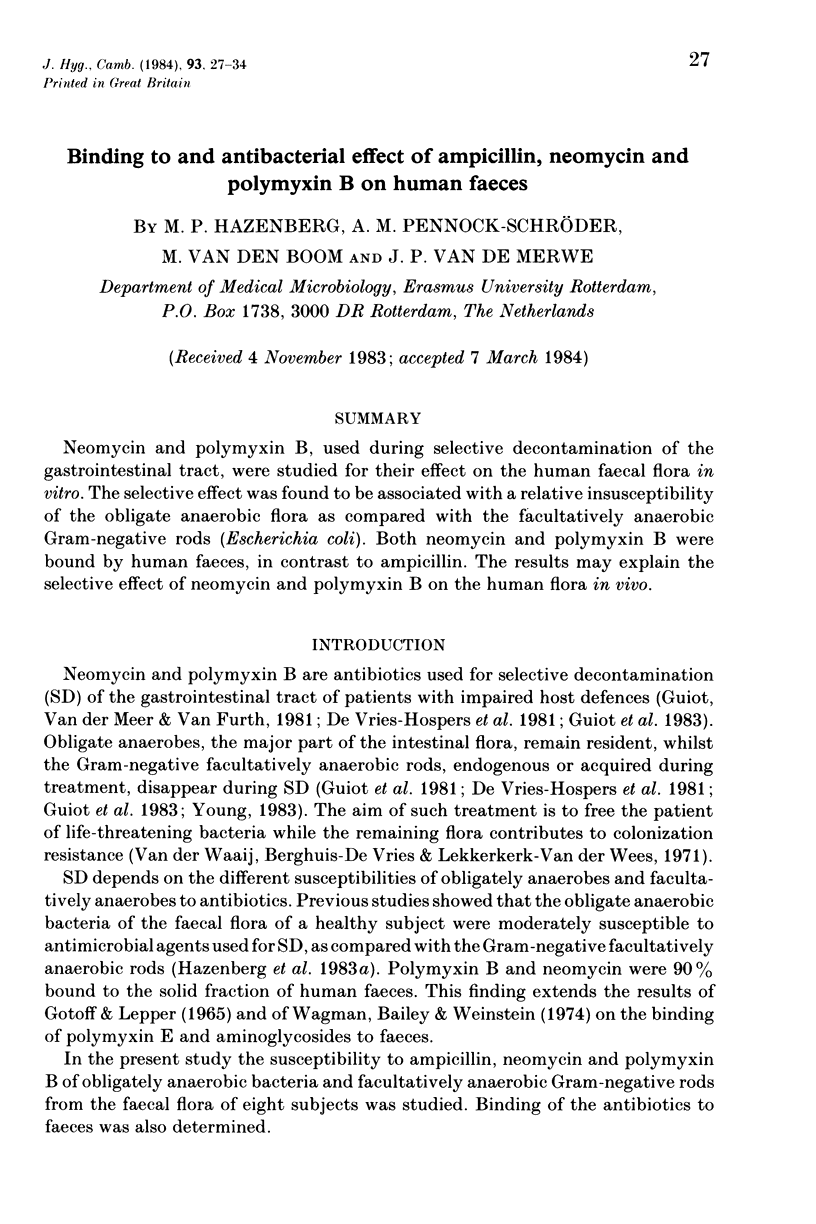
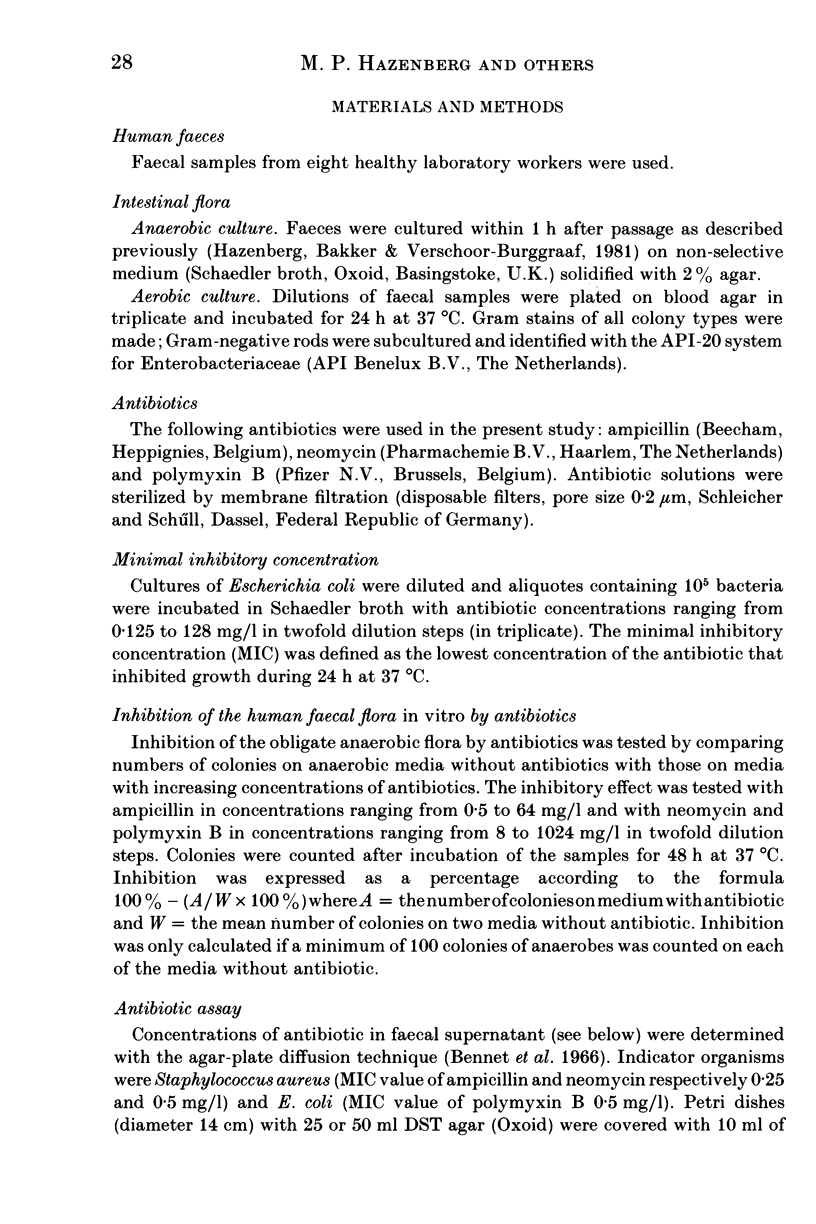
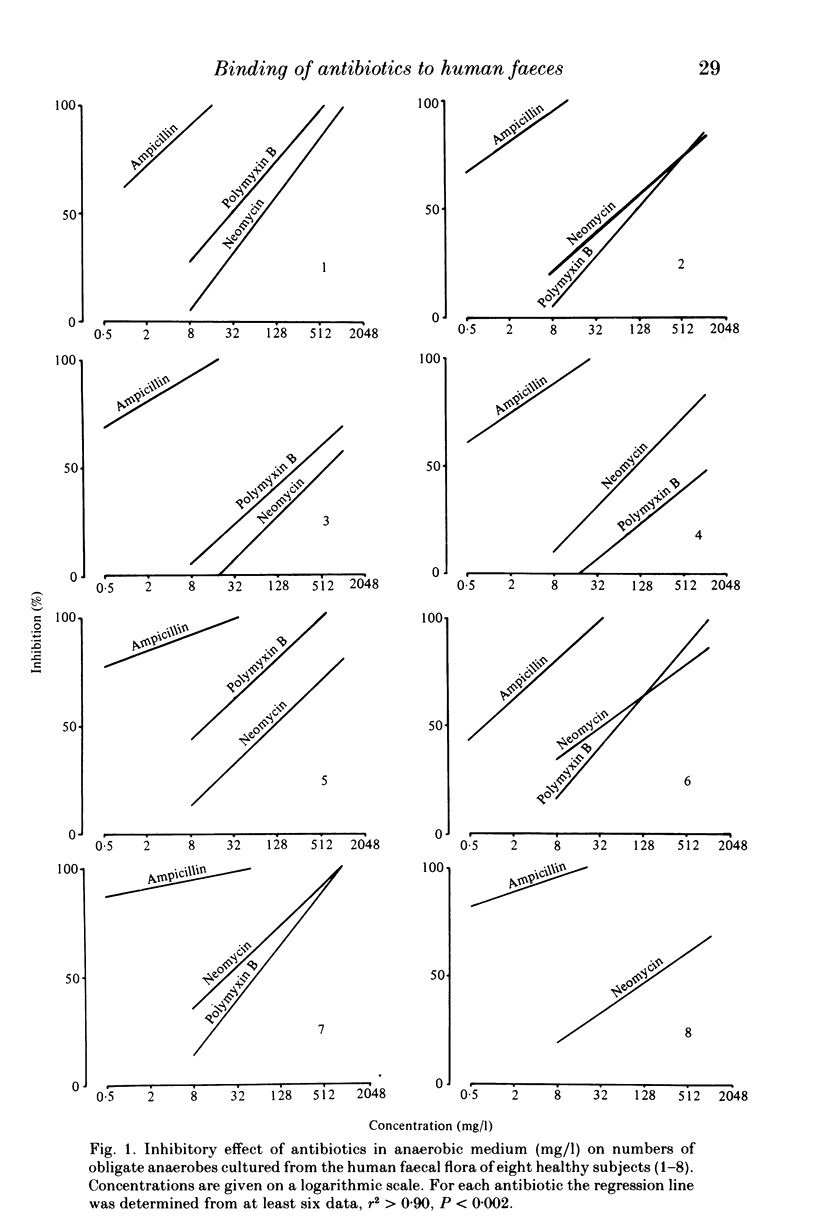
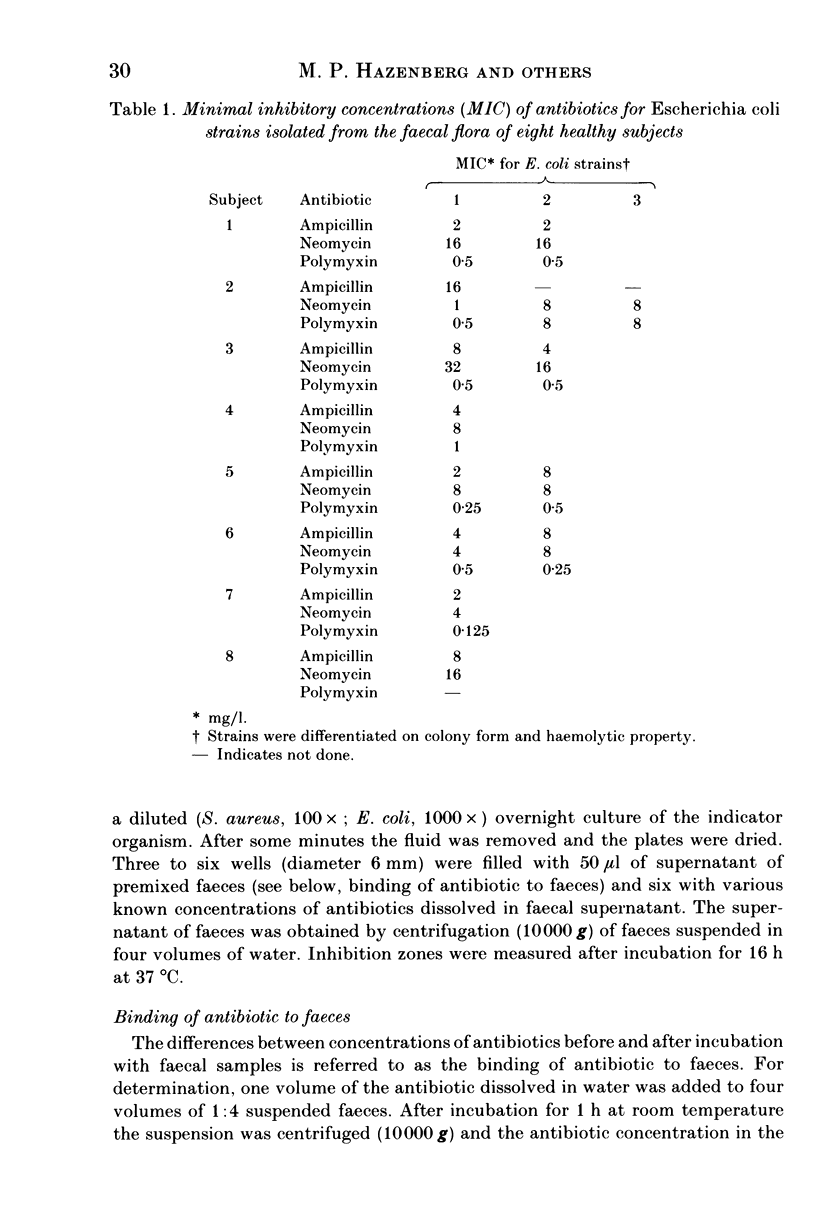
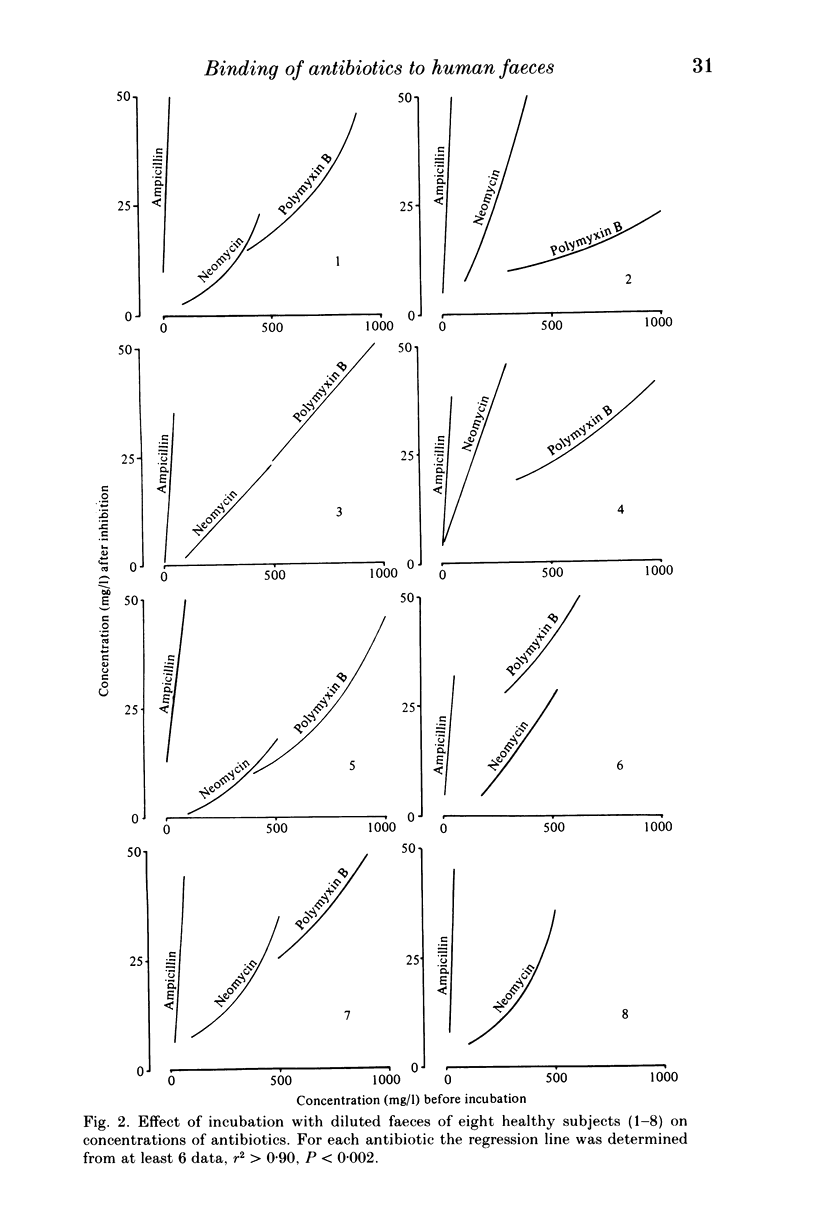
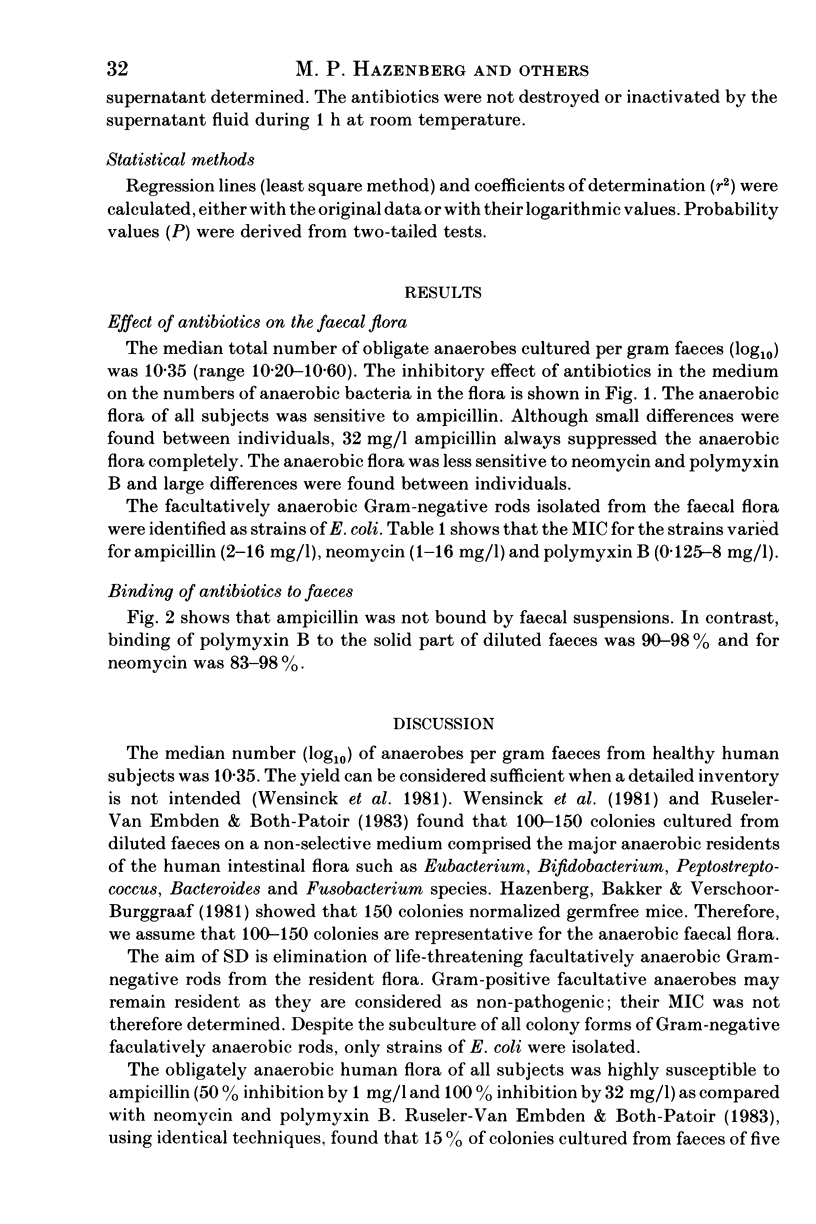
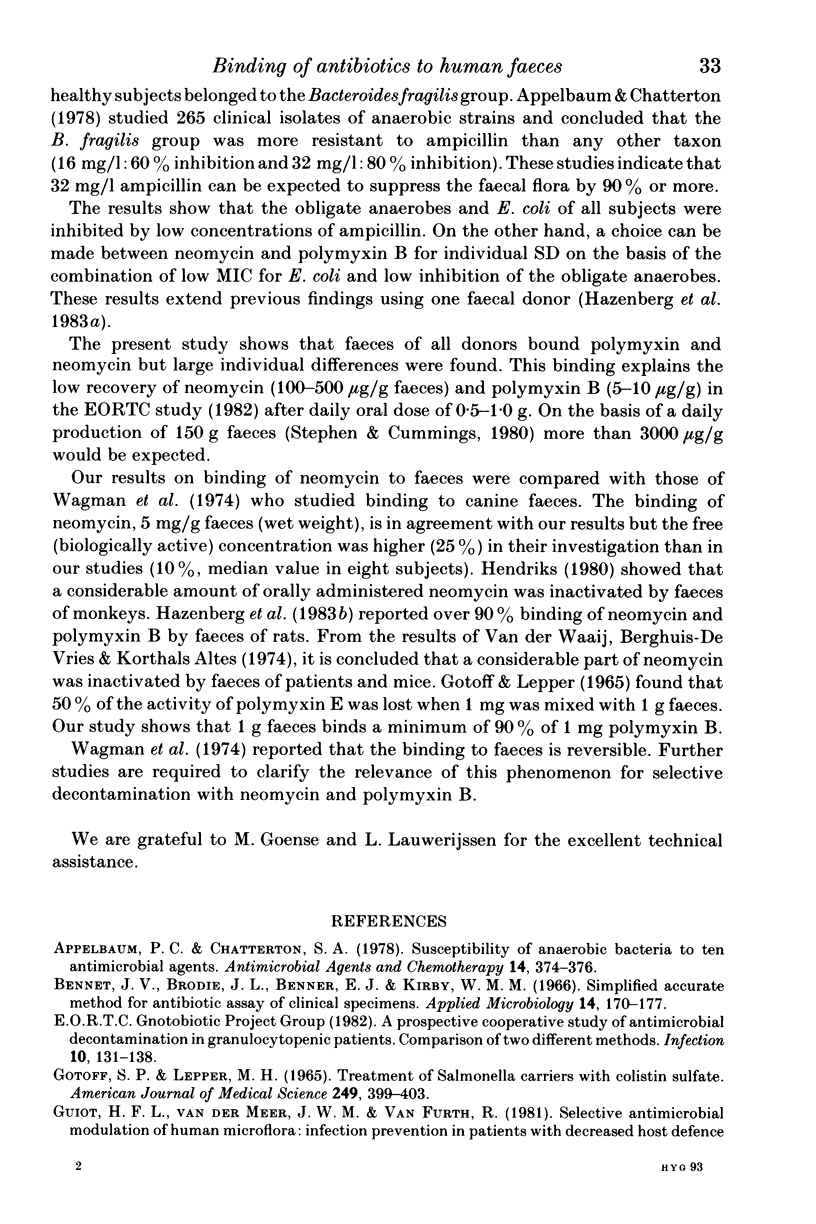
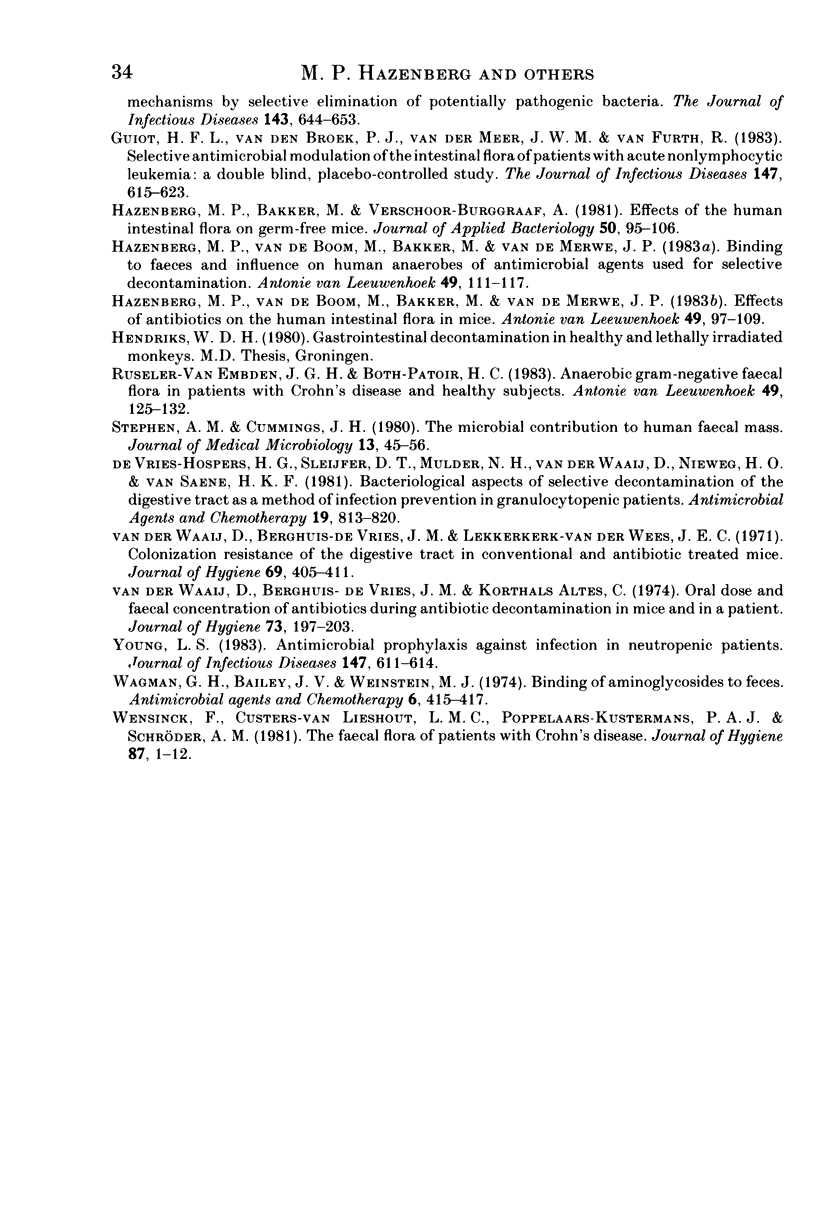
Selected References
These references are in PubMed. This may not be the complete list of references from this article.
- Appelbaum P. C., Chatterton S. A. Susceptibility of anaerobic bacteria to ten antimicrobial agents. Antimicrob Agents Chemother. 1978 Sep;14(3):371–376. doi: 10.1128/aac.14.3.371. [DOI] [PMC free article] [PubMed] [Google Scholar]
- Bennett J. V., Brodie J. L., Benner E. J., Kirby W. M. Simplified, accurate method for antibiotic assay of clinical specimens. Appl Microbiol. 1966 Mar;14(2):170–177. doi: 10.1128/am.14.2.170-177.1966. [DOI] [PMC free article] [PubMed] [Google Scholar]
- GOTOFF S. P., LEPPER M. H., FIEDLER M. A. TREATMENT OF SALMONELLA CARRIERS WITH COLISTIN SULFATE. Am J Med Sci. 1965 Apr;249:399–403. doi: 10.1097/00000441-196504000-00005. [DOI] [PubMed] [Google Scholar]
- Guiot H. F., van den Broek P. J., van der Meer J. W., van Furth R. Selective antimicrobial modulation of the intestinal flora of patients with acute nonlymphocytic leukemia: a double-blind, placebo-controlled study. J Infect Dis. 1983 Apr;147(4):615–623. doi: 10.1093/infdis/147.4.615. [DOI] [PubMed] [Google Scholar]
- Guiot H. F., van der Meer J. W., van Furth R. Selective antimicrobial modulation of human microbial flora: infection prevention in patients with decreased host defense mechanisms by selective elimination of potentially pathogenic bacteria. J Infect Dis. 1981 May;143(5):644–654. doi: 10.1093/infdis/143.5.644. [DOI] [PubMed] [Google Scholar]
- Hazenberg M. P., Bakker M., Verschoor-Burggraaf A. Effects of the human intestinal flora on germ-free mice. J Appl Bacteriol. 1981 Feb;50(1):95–106. doi: 10.1111/j.1365-2672.1981.tb00874.x. [DOI] [PubMed] [Google Scholar]
- Hazenberg M. P., Van de Boom M., Bakker M., Van de Merwe J. P. Binding to faeces and influence on human anaerobes of antimicrobial agents used for selective decontamination. Antonie Van Leeuwenhoek. 1983 Jun;49(2):111–117. doi: 10.1007/BF00393668. [DOI] [PubMed] [Google Scholar]
- Hazenberg M. P., Van de Boom M., Bakker M., Van de Merwe J. P. Effect of antibiotics on the human intestinal flora in mice. Antonie Van Leeuwenhoek. 1983 Jun;49(2):97–109. doi: 10.1007/BF00393667. [DOI] [PubMed] [Google Scholar]
- Ruseler-van Embden J. G., Both-Patoir H. C. Anaerobic gram-negative faecal flora in patients with Crohn's disease and healthy subjects. Antonie Van Leeuwenhoek. 1983 Jun;49(2):125–132. doi: 10.1007/BF00393670. [DOI] [PubMed] [Google Scholar]
- Stephen A. M., Cummings J. H. The microbial contribution to human faecal mass. J Med Microbiol. 1980 Feb;13(1):45–56. doi: 10.1099/00222615-13-1-45. [DOI] [PubMed] [Google Scholar]
- Wagman G. H., Bailey J. V., Weinstein M. J. Binding of aminoglycosides to feces. Antimicrob Agents Chemother. 1974 Oct;6(4):415–417. doi: 10.1128/aac.6.4.415. [DOI] [PMC free article] [PubMed] [Google Scholar]
- Wensinck F., Custers-van Lieshout, Poppelaars-Kustermans P. A., Schröder A. M. The faecal flora of patients with Crohn's disease. J Hyg (Lond) 1981 Aug;87(1):1–12. doi: 10.1017/s0022172400069187. [DOI] [PMC free article] [PubMed] [Google Scholar]
- Young L. S. Antimicrobial prophylaxis against infection in neutropenic patients. J Infect Dis. 1983 Apr;147(4):611–614. doi: 10.1093/infdis/147.4.611. [DOI] [PubMed] [Google Scholar]
- de Vries-Hospers H. G., Sleijfer D. T., Mulder N. H., van der Waaij D., Neiweg H. O., van Saene H. K. Bacteriological aspects of selective decontamination of the digestive tract as a method of infection prevention in granulocytopenic patients. Antimicrob Agents Chemother. 1981 May;19(5):813–820. doi: 10.1128/aac.19.5.813. [DOI] [PMC free article] [PubMed] [Google Scholar]
- van der Waaij D., Berghuis-de Vries J. M., Korthals Altes C. Oral dose and faecal concentration of antibiotics during antibiotic decontamination in mice and in a patient. J Hyg (Lond) 1974 Oct;73(2):197–203. doi: 10.1017/s0022172400024025. [DOI] [PMC free article] [PubMed] [Google Scholar]
- van der Waaij D., Berghuis-de Vries J. M., Lekkerkerk Lekkerkerk-v Colonization resistance of the digestive tract in conventional and antibiotic-treated mice. J Hyg (Lond) 1971 Sep;69(3):405–411. doi: 10.1017/s0022172400021653. [DOI] [PMC free article] [PubMed] [Google Scholar]


